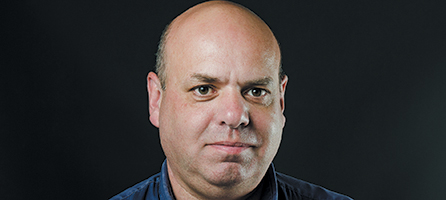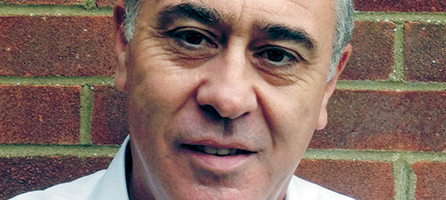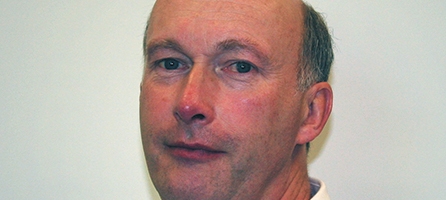
Phil Kneale, director, Graphtec GB
With uncertainty surrounding Brexit and the consequent devaluation of sterling, the sign industry is arguably best placed to meet the challenges of 2018. Significantly, around 90 percent of the equipment already installed for core manufacturing activities can be adapted to open up new markets that will help fuel future growth and prosperity during what has become a changing and frequently volatile business climate.
There has, for example, been a noticeable migration by sign and graphics manufacturers, and digital printing and finishing specialists to the potentially lucrative print wear and promotional products, packaging, and labelling sectors. This is a trend that will continue during 2018 and beyond that will help sustain financial stability.
The cutting/plotting machines supplied by Graphtec GB have enabled these markets to become more readily accessible and this has been a major factor in ensuring the survival of many companies. As a consequence, product development at Graphtec GB’s parent company in Japan has focused increasingly on bringing to market equipment that will have a much broader appeal for businesses keen to maximise new business opportunities.

Around 90 percent of the equipment already installed for core manufacturing activities can be adapted to open up new markets that will help fuel future growth”
A typical example has been the introduction of Graphtec’s FCX2000 series of flatbed cutter/plotters that have demonstrated a huge capacity for fresh innovation and market diversification. It allows integrated cutting, creasing, and drafting functions within a single machine, via a specially configured cutting head that incorporates dual tool-holding units. Significantly, the machine will handle virtually any rigid, semi-rigid, or flexible material. This ranges from heavier board materials for point-of-sale display and packaging applications, high-density films for traffic and road signs, and lighter-weight materials for multiple signage and graphics applications.
The FCX2000 incorporates Graphtec’s latest version 6 ARMS (Advanced Registration Mark Sensing) system for enhanced cutting accuracy and is supplied with the new Pro Studio production software.
A very bright picture

Mike Smith, operations director, Signfab
With an ever-changing industry it is difficult to predict any main growth areas, as there are so many differing facets to consider, from vehicle wraps, graphics, new materials such as ‘living signage’, to new textured materials.
Innovations within sign illumination technology, as seen at trade shows, seem to be at the forefront at the moment and I feel that illumination will lead the way into 2018.
The challenges are likely to be fighting the increasing costs from suppliers, materials are currently going up at rates that clients are struggling to pass on, and the influence of Brexit will inevitably play a part also.
Strong companies will get stronger, but the weak and vulnerable companies will fail, and unfortunately that appears to be happening already.

Innovations within illuminations as seen at trade shows seem to be at the forefront at the moment and I feel that illumination will lead the way into 2018”
Education is another area that has its challenges in the sign industry for many years, government funding is available for NVQs through Walsall College, but it seems they also struggle to get candidates to partake. It is also a field that Signfab has recognised as a key element for our staff and that of our customers. By joining forces with Sam Armstrong’s ?Make it Happen’ educational days, we believe we are helping to remove the challenges that our customers and staff face when quoting for new products and ever-changing innovations.
Bespoke offering

Peter Davidson, senior business development manager, Inktec Europe
While many of the current sign industry trends are set to continue, there is likely to be some new dynamics in the use of wall and surface coverings, textured printing, and dye-sublimation inks for printed tension fabric displays in 2018.
Take wall coverings, which has been an ongoing trend for a few years now. Growth potential here is in the ability to create unique bespoke creations. One-offs are now much easier to deliver using digital large-format printers. This creates more accessible solutions that both business and domestic environments are wanting to take advantage of. The rise of self-adhesive repositionable media is also enabling the end-user to have more involvement. And while wall and floor coverings have been a dominant part of this sector to date, there are some clear indications that this will also increasingly extend to ceilings too.

One-offs are now much easier to deliver using digital large-format printers, which creates more accessible solutions that both business and domestic environments are wanting to take advantage of”
Similarly, 3D printing is likely to become more prevalent as it is increasingly used now for the retail market. However, this love of the added dimension does not need to be limited to 3D. There is also the development of 2D textured printing being created by the likes of Jetrix LX LED UV printers, where building layers of print or clear lacquer is adding a new raised dynamic to simple flat printing.
Finally, the use of backlit and frontlit tension fabric systems is increasingly being used for exhibitions, signage, and retail. So, while the use of these formats may not be anything new, it is becoming increasingly imperative to ensure that the most intense colours are created particularly when used with lighting. This is where dye-sublimation inks that deliver a high-density colour such as Inktec’s Sublinova range will come to the fore. These inks in essence become part of the fabric, rather than simply sitting on the surface. This creates an increased level of colour density, which really intensifies with the use of lighting.
Increased pressure

Robert Marshall, vice-president (market development), AXYZ International
There will be many new challenges that need to be met by the sign industry in 2018. These relate primarily to the pressure exerted by customers on suppliers to reduce prices and provide shorter turnaround times. In consequence, sign manufacturers will have to become even more competitive by ensuring that the equipment installed meets every requirement that will make the company more favourably positioned to tender for and win new and higher value contracts.
This relates especially to owners of CNC routers, for which there has been such a rapid development in new technology over recent years. These have led to much higher standards of routing/cutting efficiency in terms of faster and more accurate processing of materials and greatly enhanced quality of output. Sign manufacturers that rely on a machine that may be up to ten years old, and bereft of these technological advancements, will find themselves at a distinct disadvantage compared to sign-makers that have upgraded to the very latest machines.
This is because they achieve faster routing/cutting speeds, a higher quality of finished product and reduced manual intervention.

Design features that were once considered a luxury and the domain of only a privileged few machine owners are now essential”
Design features that were once considered a luxury and the domain of only a privileged few machine owners are now essential if a company is to remain competitive. Such features include, for example, radically expanded automatic tool change (ATC) systems to enable reduced manual involvement and multiple tasking. Another example is localised head extraction units to lower or eliminate cleaning time between jobs in order to meet critical turnaround times.
More specifically, machine options such as camera registration for optimum alignment of printed materials, used typically on the latest AXYZ Trident print finishing system, will help reduce waste and increase productivity. At the same time, the combination of knife and router tools found on this machine enables the finishing of virtually any commonly used sign-making material. Furthermore, drive systems and controllers have advanced so rapidly over the years that post-machine manual finishing has been eliminated. For example, the latest AXYZ A2MC controller will enable the routing and cutting of acrylic with a polished edge finish to save time and labour costs. Furthermore, the availability of twin-carriage assemblies on AXYZ machines can instantly halve production times by simultaneously processing two parts of the same job.
Your text here...